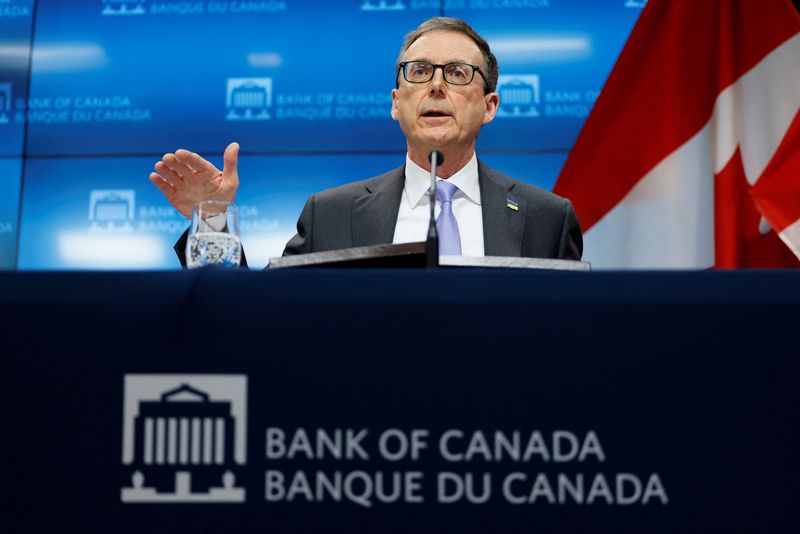By Julie Gordon and David Ljunggren
OTTAWA (Reuters) -The Bank of Canada announced a smaller-than-expected interest rate hike on Wednesday and said it was getting closer to the point where rate hikes could end, as it forecast the economy could possibly slip into a slight recession.
The central bank increased its policy rate by half a percentage point to 3.75%, coming up short on calls for another 75 basis points move. It has lifted rates by 350 basis points since March, one of its fastest tightening cycles ever.
"This tightening phase will draw to a close. We are getting closer, but we are not there yet," Governor Tiff Macklem said in prepared remarks ahead of a news conference.
How much higher rates need to go "will depend on how monetary policy is working to slow demand, how supply challenges are resolving and how inflation and inflation expectations are responding," he said.
Macklem added that the central bank was still far from its goal of low, stable and predictable inflation at 2%, but was trying to balance the risks of under- and over-tightening.
Canada's economic growth will stall later this year and early next year, the bank said earlier as it updated its quarterly forecasts, which "suggests that a couple of quarters with growth slightly below zero is just as likely as a couple of quarters with small positive growth."
A technical recession, two consecutive quarters of negative growth, is possible between the fourth quarter of 2022 and the end of the second quarter of 2023, the forecasts show.
That darkening outlook likely guided the decision to challenge market pricing with a smaller move, said analysts, noting that while warnings of future hikes take the edge off the surprise, the Bank of Canada may be getting more cautious.
"We have several indicators suggesting that we're playing with fire if we think we can follow the (U.S. Federal Reserve) all the way up to 5% or so," said Jimmy Jean, chief economist at Desjardins Group.
Inflation in Canada has slowed to 6.9% in September from a peak of 8.1% in June, but core measures remain broad-based and persistent. The central bank revised downward its inflation outlook a touch on lower commodity prices and easing supply chain disruptions.
"Inflation is expected to return to the top of the 1%-3% control range by the end of 2023 and to the 2% target by the end of 2024," it said.
The Canadian dollar was trading 0.3% higher at 1.3560 to the greenback, or 73.75 U.S. cents.
Money markets now see interest rates peaking between 4.0% and 4.25% in the coming months, down from nearly 4.5% before the announcement.
